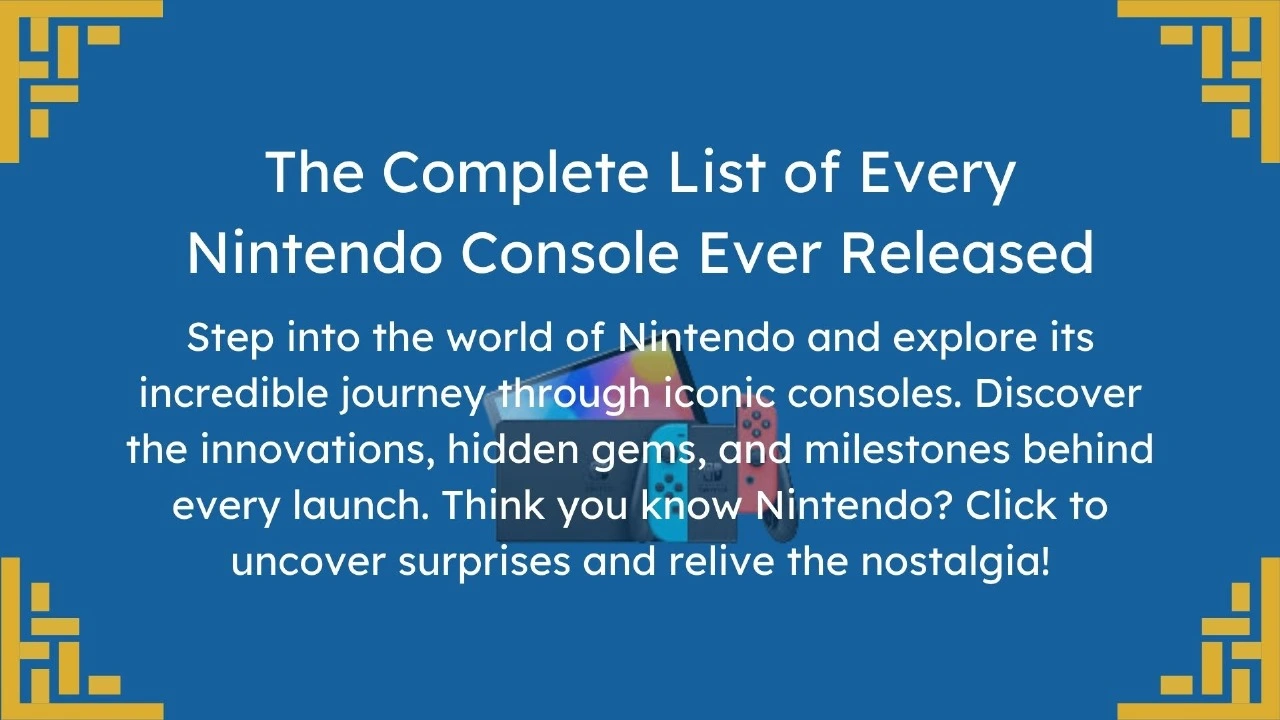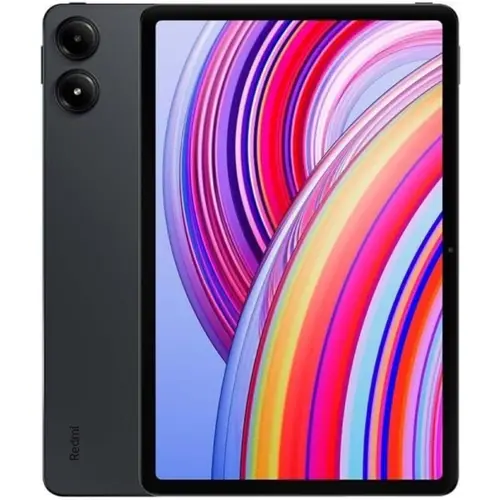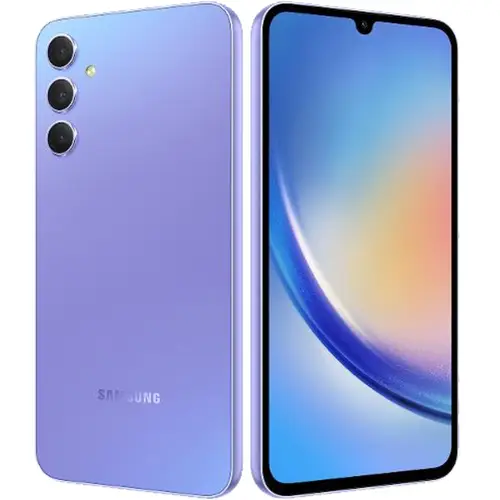Nintendo is synonymous with gaming innovation. From their early days in the arcade business to their groundbreaking home Nintendo consoles, the company has continually shaped the gaming landscape. In this blog post, we’ll explore the legacy of every Nintendo console ever released, from the early days of the Nintendo Entertainment System (NES) to the extreme Nintendo Switch. Let’s dive into the history and features of these iconic Nintendo console systems.
Nintendo Entertainment System (NES) – 1983
Launched in Japan in 1983 and globally in 1985, the NES is often credited with reviving the video game industry after the 1983 crash. Featuring iconic games like Super Mario Bros., The Legend of Zelda, and Metroid, it became the foundation of Nintendo’s success.
Key Features:
- 8-bit graphics and sound.
- Launch of legendary franchises like Mario and Zelda.
- Introduced the iconic rectangular controller design.
Game & Watch – 1980
Before home consoles, Nintendo made a name for itself with the Game & Watch series. These handheld devices were the first to feature an LCD screen, laying the groundwork for portable gaming. It is a great addition to the Nintendo console.
Key Features:
- Single-screen handheld devices.
- First appearance of Mario in Donkey Kong (1982).
- Pioneer of portable gaming technology.
Game Boy – 1989
The Game Boy was Nintendo’s first truly successful portable console. With a monochrome display, it gained massive popularity with titles like Pokémon Red/Blue and Tetris, launching a portable gaming revolution.
Key Features:
- 8-bit processor with a 160×144 resolution.
- Over 118 million units sold worldwide.
- Famous for its long battery life.
Super Nintendo Entertainment System (SNES) – 1990
The SNES, launched in 1990, took gaming to new heights with enhanced graphics and sound capabilities. Iconic titles such as Super Mario World, The Legend of Zelda: A Link to the Past, and Super Metroid defined the console’s legacy.
Key Features:
- 16-bit graphics and advanced sound capabilities.
- A strong library of first-party games.
- Enhanced Super FX chip for 3D graphics in games like Star Fox.
Nintendo 64 (N64) – 1996
The N64 was one of the first consoles to feature true 3D gaming. Revolutionary games like Super Mario 64 and The Legend of Zelda: Ocarina of Time set a new standard for 3D gameplay.
Key Features:
- 64-bit processing power.
- Introduction of the analog stick on the controller.
- Iconic 3D platformers and adventure games.
Game Boy Color – 1998
Building on the Game Boy’s success, the Game Boy Color introduced a color screen, drastically improving gameplay visuals while maintaining backward compatibility with original Game Boy games.
Key Features:
- 8-bit color graphics.
- Backward compatibility with Game Boy titles.
- Over 49 million units sold worldwide.
Nintendo GameCube – 2001
Released in 2001, the GameCube brought Nintendo into the world of optical discs with its mini-DVD format. Despite strong game titles like Super Smash Bros. Melee and The Legend of Zelda: The Wind Waker, the console was overshadowed by the PS2 and Xbox.
Key Features:
- Compact design with 1.5GB mini-DVDs.
- 128-bit processor.
- Four-player gaming without the need for extra accessories.
Game Boy Advance – 2001
The Game Boy Advance was a significant leap forward in handheld gaming, offering 32-bit graphics, backward compatibility with GameBoy and GameBoy Color games, and a broad library of games.
Key Features:
- 32-bit processor with a larger, color screen.
- Over 81 million units sold.
- The launch of beloved titles like The Legend of Zelda: A Link to the Past and Metroid Fusion.
Nintendo DS – 2004
The Nintendo DS featured dual screens, one of which was a touchscreen. This innovative design allowed for unique gameplay experiences. The DS enjoyed massive success, with a diverse library of games ranging from Animal Crossing: Wild World to The Legend of Zelda: Phantom Hourglass.
Key Features:
- Dual screens, including a touch screen.
- Backward compatibility with Game Boy Advance games.
- Over 154 million units sold worldwide.
Nintendo Wii – 2006
The Wii revolutionized gaming with its motion-sensing controller, opening up gaming to a wider audience. While the graphics were not as advanced as the PlayStation 3 and Xbox 360, the Wii’s accessibility and family-friendly games like Wii Sports made it a cultural phenomenon.
Key Features:
- Motion controls and the Wii Remote (Wiimote).
- Backward compatibility with GameCube games.
- Over 101 million units sold worldwide.
Nintendo 3DS – 2011
The Nintendo 3DS introduced glasses-free 3D gaming and boasted a robust library of games. Titles like Super Mario 3D Land and Pokémon X and Y made it one of the best-selling handheld consoles.
Key Features:
- Glasses-free 3D display.
- Backward compatibility with DS games.
- 3D cameras and augmented reality features.
Nintendo Switch – 2017
The Nintendo Switch broke new ground with its hybrid design, allowing players to use it as both a handheld console and a traditional home console. Games like The Legend of Zelda: Breath of the Wild and Animal Crossing: New Horizons made the Switch a global success.
Key Features:
- Hybrid design for handheld and docked gaming.
- Joy-Con controllers for versatile play.
- Over 125 million units sold (as of 2023).
Virtual Boy – 1995
The Virtual Boy is often remembered as one of Nintendo’s biggest flops. Despite being marketed as the first 3D gaming console, it had limited game support and suffered from discomfort and poor graphics.
Key Features:
- Red-and-black graphics.
- Designed for true 3D gameplay.
- Only sold around 770,000 units worldwide.
Nintendo Color TV-Game – 1977
The Nintendo Color TV-Game was an early foray into the home console market, offering simple Pong-like games. This console, released in Japan, marked the beginning of Nintendo’s gaming hardware journey. These are all Nintendo consoles that made this series popular.
Key Features:
- Simple color TV-based games.
- Limited to Japan.
- Nintendo’s first major hardware product.
Conclusion
Nintendo’s consoles have consistently pushed the boundaries of gaming, whether through innovative hardware like the Wii’s motion controls or the hybrid nature of the Switch. From the NES to the Nintendo Switch, each system has played a crucial role in shaping the future of video games, influencing generations of players and developers alike. Nintendo’s legacy continues to be defined by its ability to combine creativity with advanced technology to provide some of the most memorable gaming experiences ever. Visit BuyElectro to buy your gaming consoles and much more!
FAQs
Which Nintendo console is the best-selling of all time?
The Nintendo Switch is currently the best-selling Nintendo console, with over 125 million units sold as of 2023.
What was the first Nintendo console?
The first Nintendo console was the Nintendo Color Game, released in 1977.
Was the Virtual Boy a success?
No, the Virtual Boy is considered a commercial failure due to its poor design, limited game library, and health concerns related to its 3D display.
What makes the Nintendo Switch unique?
The Nintendo Switch is unique because it’s a hybrid console, allowing users to play both handheld and docked games, bridging the gap between portable and home gaming.
What is the legacy of the Nintendo 64?
The Nintendo 64 is remembered for pioneering 3D gaming with Super Mario 64 and The Legend of Zelda: Ocarina of Time, setting the stage for modern 3D games.





























